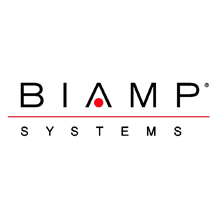 |
| The new training program is designed to help participants build foundation in VoIP technology and SIP protocol |
Biamp Systems, a leading provider of innovative, networked media systems, recently announced its newest training program focusing on VoIP certification. Targeted specifically to AV industry professionals, the new training program is designed to help participants build a foundation in VoIP technology and the SIP protocol that will help them better design and troubleshoot VoIP installations. Biamp® integrators will gain the necessary tools and knowledge to design, integrate, and troubleshoot Biamp products with VoIP telephony systems.
“Modern businesses are increasingly incorporating VoIP technology into their day-to-day operations. However, the technology remains complicated, and until now there has been a lack of training programs focused on VoIP’s applications and functionality within the AV industry,” said Kiley Henner, director of customer experience for Biamp Systems. “Our applications engineers have spent years fine-tuning their expertise as Biamp has developed VoIP functionality in our products. We’re now passing that knowledge on through this new training series. It really is the best way for Biamp to share our knowledge and expertise with the professional audio industry.”
Delivered via self-paced online videos
The Biamp VoIP certification training series is delivered via self-paced online videos, allowing students to learn at their own pace. The training videos can be accessed any time, and all sessions are available free of charge. As with other certification training offerings from Biamp, VoIP certification training will count toward InfoComm CTS requirements for annual renewal units (RUs).
Upon completion of Biamp VoIP certification, attendees will have a better understanding of the following:
- VoIP systems on modern Ethernet networks, including network design and setups, as well as the physical components used in VoIP systems.
- Use of Call Setup protocols in a VoIP environment, including an extensive understanding of how call sessions are negotiated between parties within a VoIP system.
- Real-Time Protocols (RTP) used within a VoIP transaction, including the process of converting audio signals for traversal across an Ethernet network.
- Quality control mechanisms for VoIP exchanges on a network, including the use of Class of Service (CoS) and Quality of Service (QoS) to manage packet delivery.
- Troubleshooting techniques for resolving communication issues between VoIP devices on a network, including the use of packet monitoring software such as Wireshark® to identify problems.
- Proficiency using Biamp software platforms to configure Biamp VoIP endpoints.




